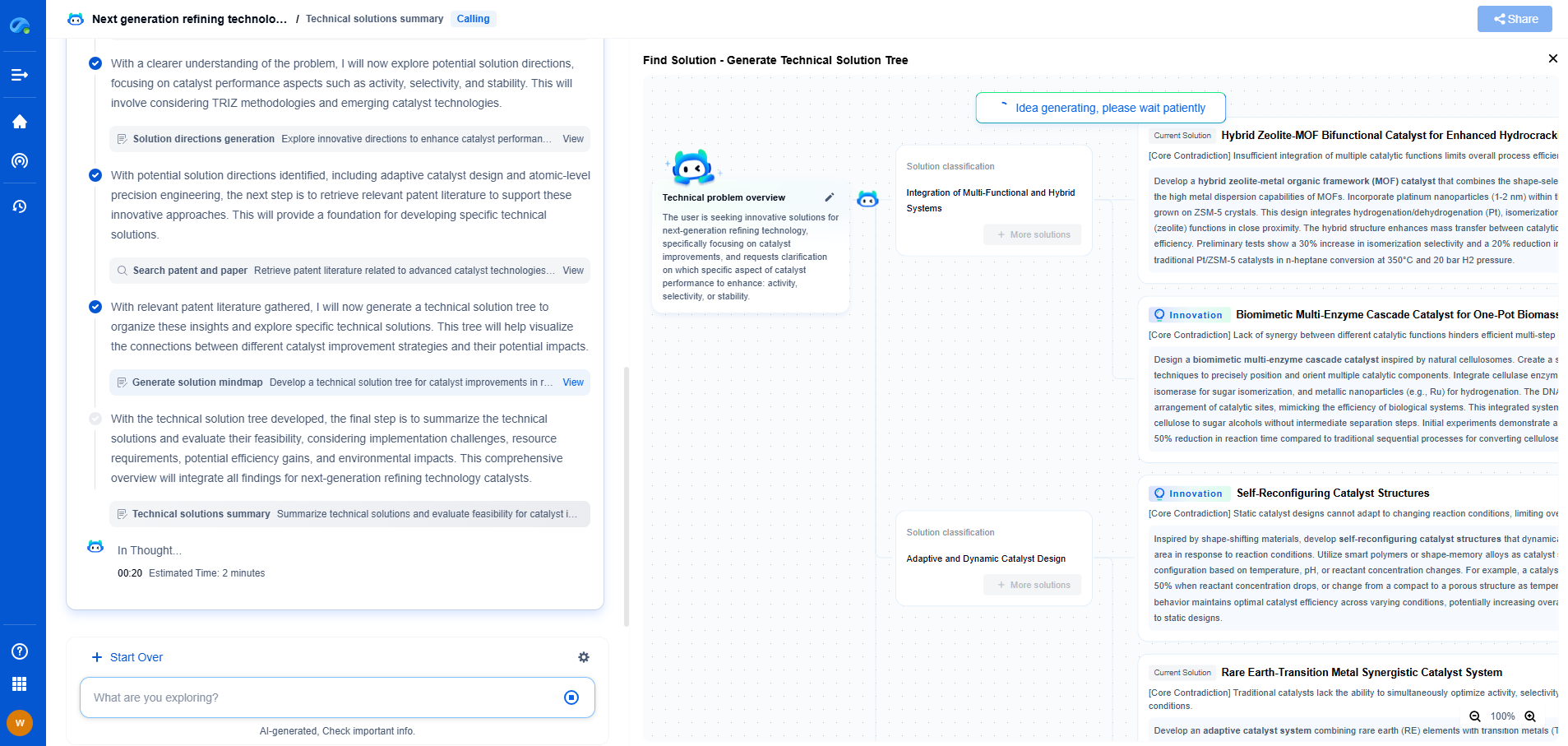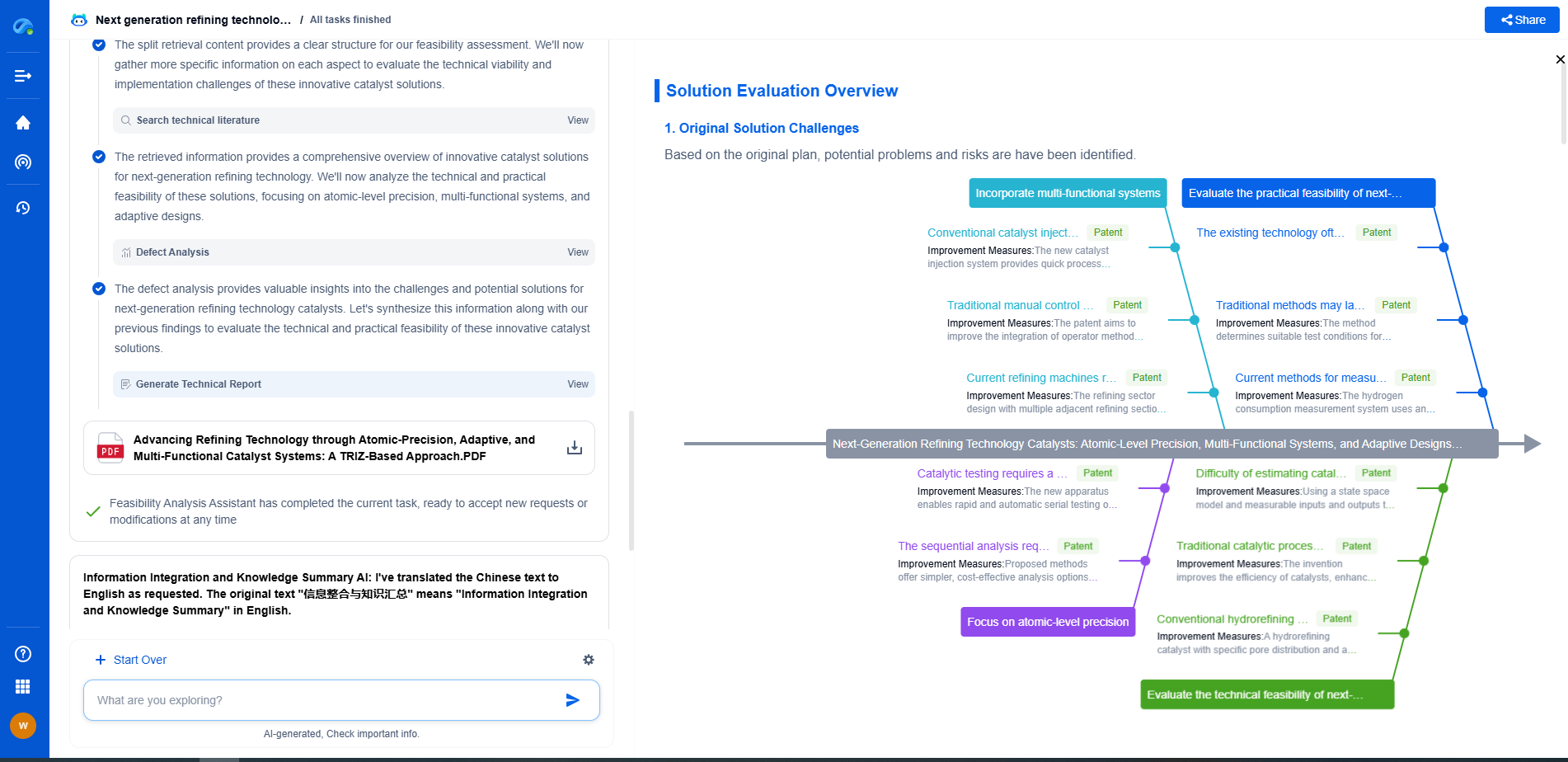Why Do Electric Motors Hum? Common Causes and Acoustic Characteristics
JUL 16, 2025 |
Electric motors are ubiquitous in modern machinery, powering everything from household appliances to industrial equipment. One common phenomenon observed in electric motors is a humming sound. While this hum is often benign, it can sometimes indicate underlying issues. Understanding the causes and characteristics of this hum can help in diagnosing and addressing any potential problems.
Causes of Electric Motor Humming
1. Electromagnetic Forces
The primary cause of humming in electric motors is the electromagnetic forces at play during operation. As electricity flows through the coils, it creates a magnetic field that interacts with other components of the motor. This interaction can produce vibrations, which manifest as a humming sound. The frequency of this hum is typically linked to the electrical supply frequency, often 50 or 60 Hz, depending on the region.
2. Mechanical Imbalances
Mechanical imbalances within the motor can also contribute to the humming sound. If the rotor is not evenly balanced or if there is misalignment in the motor components, it can lead to vibrations. These vibrations can resonate through the motor’s housing and produce a hum. Regular maintenance and alignment checks can help mitigate these issues.
3. Load Variations
The load on the motor can influence the intensity and pitch of the humming sound. A motor operating under a heavy load may produce a more pronounced hum due to the increased electromagnetic forces required to maintain its operation. Conversely, a motor running with no load may hum due to insufficient damping of vibrations.
4. Structural Resonance
The structure and mounting of the motor can amplify the humming sound. If the motor is mounted on a surface or structure that has its own resonant frequency, the vibrations from the motor can cause this surface to resonate. This can significantly amplify the sound, making the hum much more noticeable.
Acoustic Characteristics of Electric Motor Humming
1. Frequency and Pitch
The frequency of the humming sound is closely related to the frequency of the electrical supply. In regions with a 60 Hz power supply, the hum typically has a base frequency of 60 Hz. The pitch of the hum can change depending on the operational speed of the motor and the load it is under. Higher speeds and heavier loads can shift the frequency slightly, altering the pitch.
2. Intensity and Volume
The intensity of the hum can vary based on several factors, including the size and power of the motor, its mounting conditions, and the surrounding environment. Larger motors often produce a louder hum due to the greater electromagnetic forces and mechanical movements involved. Poorly insulated or enclosed environments can also increase the perceived volume of the hum.
3. Harmonic Content
In some cases, the hum of an electric motor may contain harmonics, which are multiples of the base frequency. These harmonics can add complexity to the sound, making it more noticeable or even unpleasant. Harmonics are often a result of non-linearities in the motor’s operation, such as those caused by uneven wear or electrical distortions.
Addressing Electric Motor Humming
1. Regular Maintenance
Regular maintenance is key to preventing and addressing humming issues in electric motors. Tasks such as checking for mechanical imbalances, ensuring proper alignment, and inspecting for wear and tear can help minimize unwanted vibrations and noise.
2. Vibration Dampening
Implementing vibration dampening measures, such as using rubber mounts or pads, can help reduce the transmission of vibrations from the motor to its surroundings. This can significantly decrease the perceived intensity of the hum.
3. Acoustic Enclosures
For environments where noise reduction is critical, using acoustic enclosures can help contain the sound. These enclosures are designed to absorb and dampen sound, preventing it from spreading into the surrounding area.
Conclusion
Electric motor humming is a common phenomenon with various potential causes, ranging from electromagnetic forces to mechanical imbalances. By understanding the characteristics and causes of this hum, steps can be taken to mitigate its effects, ensuring efficient and quiet motor operation. Regular maintenance and the implementation of noise reduction strategies can help keep motor humming at an acceptable level, enhancing both performance and comfort in environments where these motors are in use.
In the world of vibration damping, structural health monitoring, and acoustic noise suppression, staying ahead requires more than intuition—it demands constant awareness of material innovations, sensor architectures, and IP trends across mechanical, automotive, aerospace, and building acoustics.
Patsnap Eureka, our intelligent AI assistant built for R&D professionals in high-tech sectors, empowers you with real-time expert-level analysis, technology roadmap exploration, and strategic mapping of core patents—all within a seamless, user-friendly interface.
⚙️ Bring Eureka into your vibration intelligence workflow—and reduce guesswork in your R&D pipeline. Start your free experience today.
- R&D
- Intellectual Property
- Life Sciences
- Materials
- Tech Scout
- Unparalleled Data Quality
- Higher Quality Content
- 60% Fewer Hallucinations
Browse by: Latest US Patents, China's latest patents, Technical Efficacy Thesaurus, Application Domain, Technology Topic, Popular Technical Reports.
© 2025 PatSnap. All rights reserved.Legal|Privacy policy|Modern Slavery Act Transparency Statement|Sitemap|About US| Contact US: help@patsnap.com

